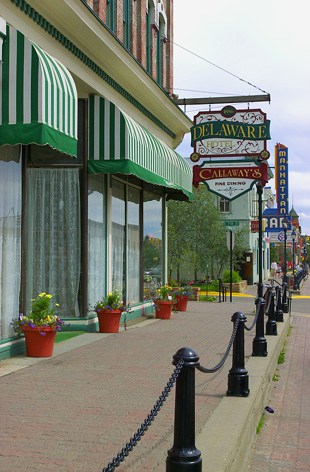My experience is with Winsor & Newton Artist’s watercolor paints in large and small pans or tubes. And, in my experience, most colors will “dry out.” Which in tube form, would be considered expired by most art stores. I’m unclear on the predictability of the shelf life of watercolor paints, but I bet each manufacturer knows.
What happens over time is that the paint dries out. Even unopened tubes can eventually dry out somehow. The manufacturer used to pull the older product from my local art store shelves and replace the stock with fresher stock. I’m not sure if that is a current practice or not, but I can tell you that I got some great deals on “expired” or older shelf stock during my lean years. The paint sometimes requires a little more attention but is quite useable even after completely drying out. In the worst case, you need to carefully “peel” the tube from around the paint using needle nose plier and a pallet knife. Apply a little glycerin, and you’re ready to paint. Then just water as usual for washes. Some colors, like the Cobalts, can be a bit granular once they dry out, so they require more work, or you end up with “pixelated” looking washes.
It’s useful to understand that watercolor is essentially just a very finely ground powder pigment. Pigments may come from something found in nature. Perhaps a mineral, a plant, or even an animal (colorful feathers, sea creatures, etc.). Or, the pigment or dye can be synthetic, such as the famous “Pthalo” or “Winsor” colors. The pigment scarcity, or the difficulty of the process, are the reasons for price variance of colors. Some colors, like Cobalt Violet, are more difficult ingredients to source and process into tiny particles. There is also the nature of the permanence or lightfastness of the paint to consider too.
The pigment’s main ingredient is the color component. The color component needs to be broken down to the smallest possible size and kept ready in a medium for storage until use. For watercolors, the only thing missing is the water. Water enables the pigment to be sprayed or brushed on paper (though technically you can use a tube color right out of the tube without water). A medium, typically glycerin, holds the pigment together. Pans have less glycerin to keep them semi-solid. Tubes have more glycerin to keep them more on the fluid side.
I’m no expert, and I do not know all of the ingredients to an excellent watercolor paint, but somehow, over time, they tend to dry out.
But, I do know that even when a tube becomes rock solid, the material inside remains quite useable if you are willing to put forth the effort. Some colors are more of a pain to recover than others, but mostly you are turning a dried-out tube of watercolor paint into a pan of watercolor paint. It is very useable. Some classes of older watercolor pigments are super rare these days, rose madder genuine and some of the cobalt and cadmium colors. By reviving some old tubes, you will extend the life of a hard to find and now discontinued color.
Modern artists have it made compared with the old masters of the fourteenth and fifteenth centuries. Earliest artists had to source their natural components to make their colors. Find them in nature, processes them, grind them, then mix with a medium such as a linseed oil or plaster. Then the “paint” was ready to use on canvas, panel, wall, or ceiling. Dark earth tone pigments ruled for quite sometime before the bright colors of the renaissance emerged. I’ve often wondered how Rembrandt or Monet would react to a modern art supply store? They wouldn’t need all those apprentices grinding pigments in pestles.


